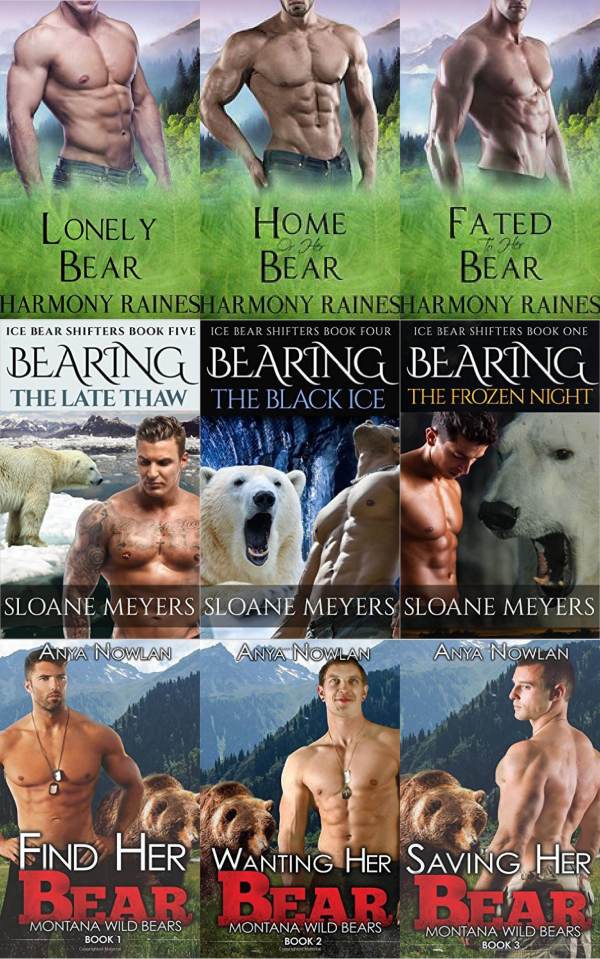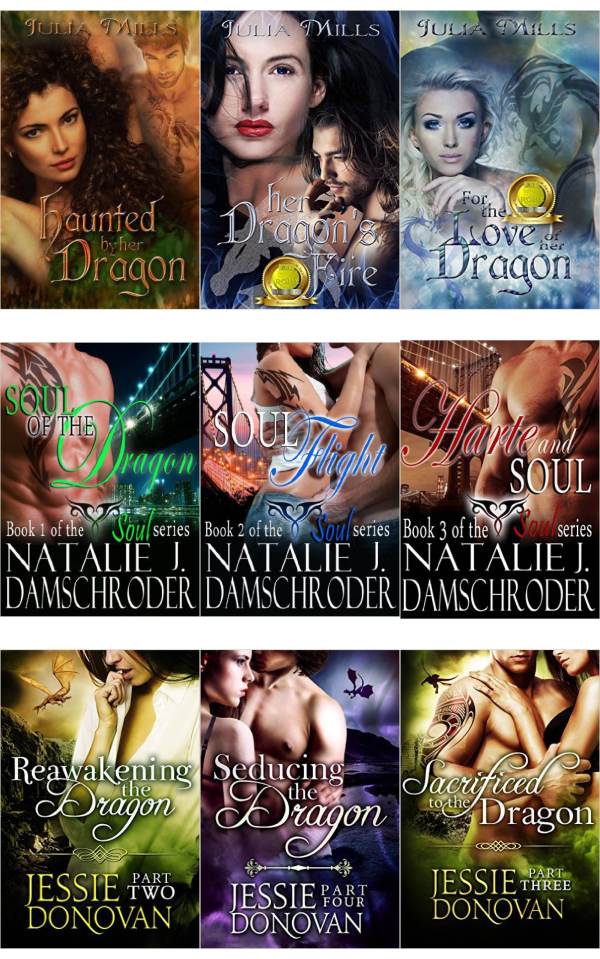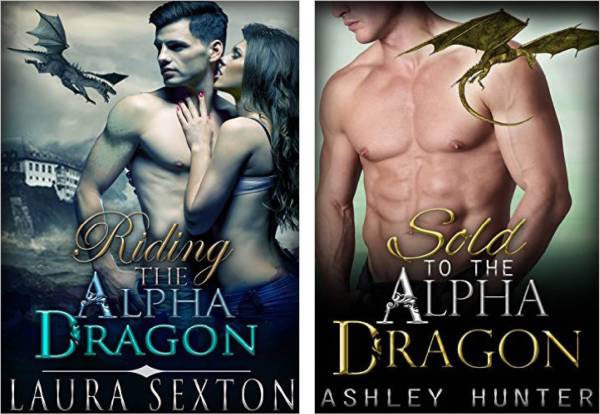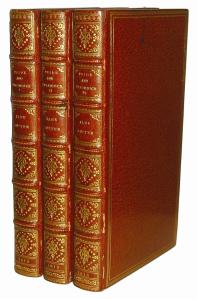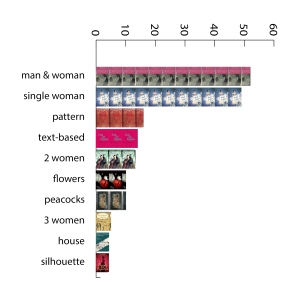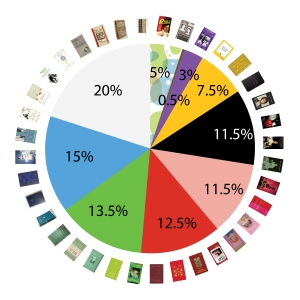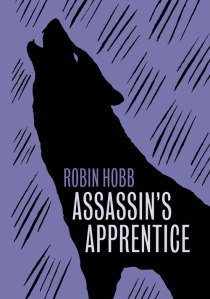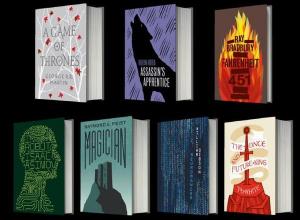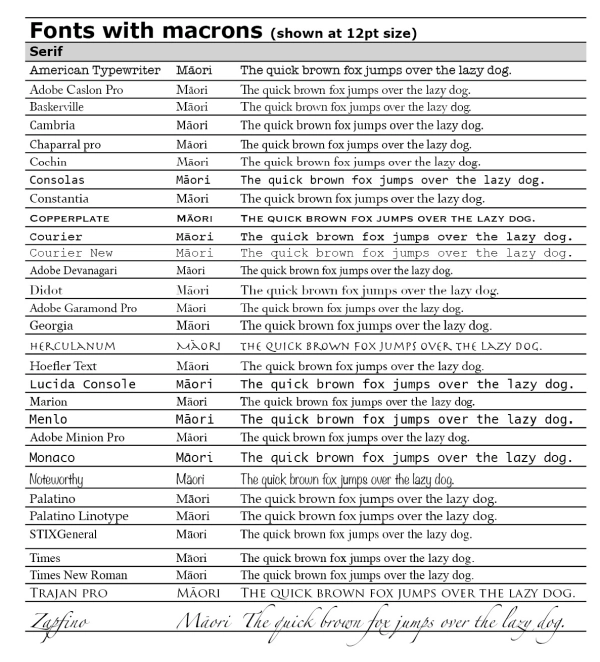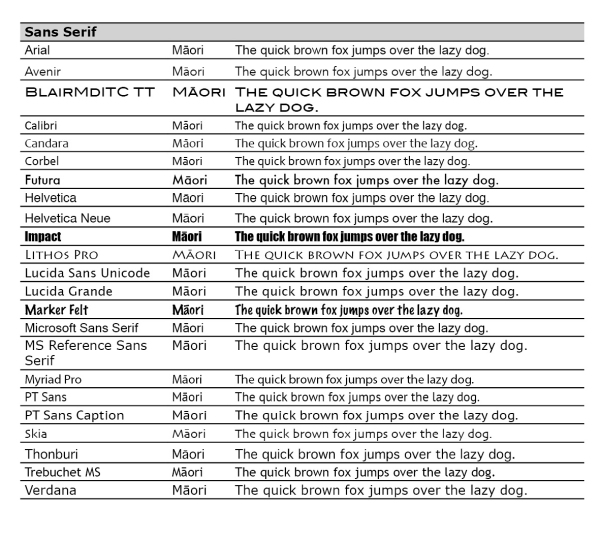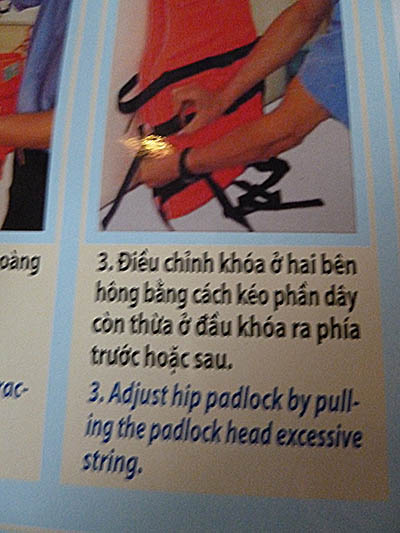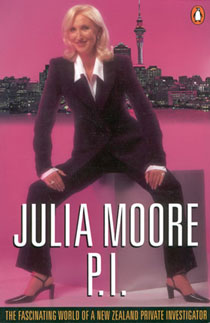Today I’m thinking about paranormal romance series’ book covers. Specifically, how the series’ covers achieve the following:
- make it clear it’s a paranormal romance novel!
- make it clear it’s a series
- have unique branding
I’m particularly interested in point (3) because there are so many very similar sounding series in this highly competitive market. How do you make your shifter romance series stand out from the eleventy billion other shifter romance series whilst still making it look like a shifter romance series?
For my extremely scientific investigation, I pulled up some series that popped up under “paranormal romance” in kindle books on Amazon. Then I decided to look specifically at shifter romance, to narrow down the genre into a subgenre, as it were.
Well, apart from the fact that bear romance is a lot more popular than I had realised, the first thing that strikes me is unsurprising: a bare-chested man on the cover is fairly mandatory in the genre.
These are three different series by three different authors, but they’re all using the same devices to create a series brand: font, layout, and—in the case of the top and bottom series—background. The fonts also create different impressions; the middle series’ font/layout makes me think there’s a more fantastical flavour to the series (more fantastical than werebears), whilst the bottom series’ font gives a hint of western. (I have no idea if these suppositions actually match the contents. That’s a whole other experiment).
(I’m also starting to wonder just how many stock photographs there are of naked man chests…)
So onto dragon shifters.
The dragon romances above also highlight another form of series branding I’ve noticed: colour tinting. I think this is partly why the bottom series looks more coherent as a brand than the top series.
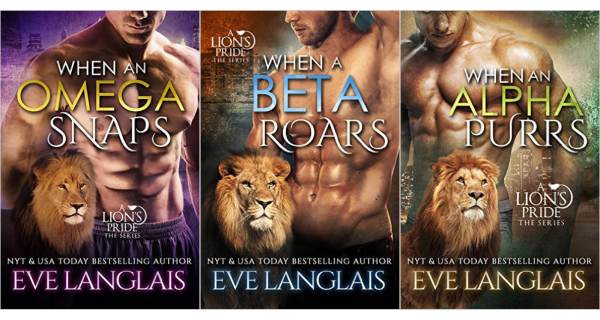
Tinted lion-y goodness! I like that the designer made the effort to find a different lion photo for each book.
And I spotted this, by assuming it was the same series. A rather unfortunate coincidence in terms of creating unique series branding:
Conclusions? Nothing earth-shattering, but obviously the shifter romance cover design starter-kit includes:
- a naked man chest
- the animal your hero is shifting into
- a distinctive font
- tinting!

